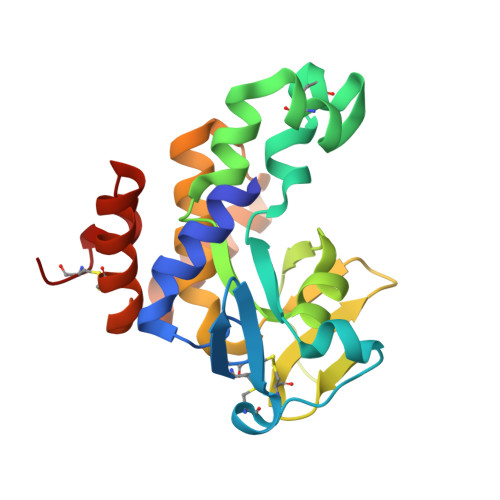The structure of Vibrio cholerae extracellular endonuclease I reveals the presence of a buried chloride ion.
Altermark, B., Smalas, A.O., Willassen, N.P., Helland, R.(2006) Acta Crystallogr D Biol Crystallogr 62: 1387-1391
- PubMed: 17057343
- DOI: https://doi.org/10.1107/S0907444906034196
- Primary Citation of Related Structures:
2G7E, 2G7F - PubMed Abstract:
The crystal structure of a periplasmic/extracellular endonuclease from Vibrio cholerae has been solved at low and at neutral pH. Crystals grown at pH 4.6 and 6.9 diffracted to 1.6 A (on BM01A at the ESRF) and 1.95 A (on a rotating-anode generator), respectively. The structures of the endonuclease were compared with the structure of a homologous enzyme in V. vulnificus. The structures of the V. cholerae enzyme at different pH values are essentially identical to each other and to the V. vulnificus enzyme. However, interesting features were observed in the solvent structures. Both V. cholerae structures reveal the presence of a chloride ion completely buried within the core of the protein, with the nearest solvent molecule approximately 7 A away. Magnesium, which is essential for catalysis, is present in the structure at neutral pH, but is absent at low pH, and may partly explain the inactivity of the enzyme at lower pH.
- The Norwegian Structural Biology Centre, Faculty of Science, University of Tromsø, N-9037 Tromsø, Norway.
Organizational Affiliation:

















